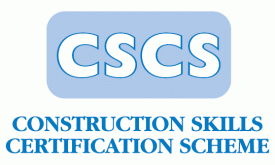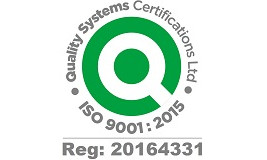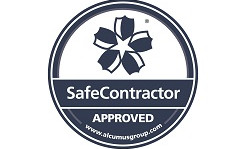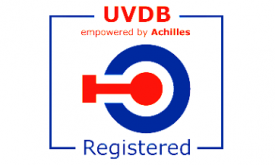9 Useful Tips to Consider when Refitting a Blower
When refitting a blower, there are some things to bear in mind to make sure installation and operation runs smoothly.
If you’re refitting a blower, the chances are it has just been repaired or it is a replacement for one that has become damaged. To ensure the long life of your blower, make sure you follow these 9 useful tips.
Storage
1 - Prevent rust
Most blowers are made from ferrous materials, couple that with the notorious British rain, or humid factory conditions and it’s a one-way ticket to a rusty blower.
Make sure you don’t leave your blower exposed to the elements or atmospheric moisture before it is installed to prevent rust. The blower should be stored in a cool, dry, dust-free environment.
The ports should also be sealed; you could try using some form of moisture control such as a silica gel packet; just remember to remove these before installation along with the port covers.
Installation
2 - Remove any contamination and blockages
Contamination inside the blower; such as a build-up of product, will reduce the internal clearances and eventually cause the parts to seize. Loose material or foreign objects that accidentally get in to the line; such as a steel washer, could severely damage a blower or stop it from rotating: if the motor continues to try to rotate the blower then this can result in a twisted or broken drive shaft, broken gears and smashed impeller lobes.
Before installing the blower, make sure that there is no product or objects in the line to prevent a costly blower seizure. It is especially important to check thoroughly if you suspect that the previous blower was damaged due to contamination or an object passing through it.
Please also check you have removed blanking plates from both inlet and outlet ports of the blower.
3 - Ensure that the inlet filter is appropriate for use
The filter element prevents contaminants and airborne particles from entering the blower through the inlet. These particles could either build up on the internals of the blower and cause it to seize or they could enter the process, so it is important that an appropriate air filter is fitted.
Filters should be clean and be free of rips, and holes. You should also make sure that it is suitably sealed so that the air cannot by-pass it in to the blower.
4 - Check that you have a non-return valve and that it is working.
Should the blower’s motor suddenly trip out, the job of the non-return valve is to prevent product from flowing back in to the blower.
Not only should a non-return valve be fitted, it should be working correctly too. If the valve is seized open then it is useless, if the valve is jammed shut then it acts as a physical barrier that the blower can’t work against, causing over-pressurisation.
The valve should be physically checked to make sure it is operational; that it opens under reasonable force and seals closed when the force is removed.
5 - Do you have a relief valve (blower protection valve)?
Blower protection valves are similar to relief valves in that they release excess pressure in the system, this prevents the blower from over-pressurising, over-heating and seizing.
A blower protection valve (or safety relief valve) should be fitted to protect the blower. You should also make sure that it is fully operational. If the valve is jammed open then the system will not get up to pressure, if it is seized closed then the blower is not protected.
6 - Make sure that the drive is setup correctly
There's a lot of power being transmitted through these drive connections so it is important they are setup correctly.
If the belts are slack then the power transmission will slip, reducing the rotation of the blower therefore the airflow generated which may result in blockages in the line.
If the belts are too tight then this will place excessive strain on the bearings causing them to overheat, potentially resulting in premature failure.
If the drive is misaligned, then it could cause either or both of the negative consequences mentioned above.
The drive coupling or vee-belt should be aligned between the power source and the blower and the drive belts (if fitted) should be correctly tensioned.
7 - Before fully running the blower, make sure it is rotating in the correct direction.
Although this problem normally presents itself if the motor has been removed and refitted, it is good working practice to make sure that the rotational direction is correct.
A reversal in the polarity of the motor could cause it (and the blower) to rotate in the opposite direction. On a pressure system a working non-return valve would close causing the blower to create a vacuum until it eventually overheats and seizes.
If you are unsure which direction your blower needs to rotate, take a look at this post which shows the direction of airflow.
8 - Make sure the blower is correctly lubricated before starting
Most blowers are shipped without oil as they pose a leak and contamination risk to the carriers. As such you should always presume that a blower has not been lubricated. A blower run without lubrication can fail very quickly and often catastrophically. Make sure you don’t overfill the oil as this can cause internal leaks and potentially allow oil in to the product line.
Check if the blower has been filled to the correct level with oil. If not, then use your installation and operations manual to check the type and grade of oil for your application. Fill the oil to the correct level.
If some of the bearings are grease lubricated; remember to check this too.
Make sure all lubrication plugs, windows etc. are tightened and do not leak.
Keep an eye on the oil level for the first 2 hours of operation, checking regularly for oil leaks or diminishing oil. The blower should not ‘use’ oil.
After Installation
9 – Monitor the blower in operation
If there is going to be a problem with the blowerthen it’s most likely to happen in the first few hours of operation.
If you can stop the blower before it fails, then it gives you chance to look in to possible causes and set them right. If you believe there’s a problem with the blower itself then it will be quicker and easier to rectify than if the blower has been allowed to run unchecked and becomes seriously damaged.
It is recommended that the blower is monitored for the first few hours to check that everything is OK.
This includes checking for hot-spots, excessive vibration and/or noise, and oil levels.
Blowers should always be fitted by a competent person, guided by an installation and operations manual which they have read and understand.
The area should be electrically and mechanically isolated.
The system should be free of faults and the points mentioned above investigated prior to installation.
Your particular system may have additional precautions necessary, this is an overview of the most common issues and how to help avoid them, it is not a substitution for the OEM installation and operations manual. If you are unsure, have any questions or need further help to install your blower, please feel free to contact us.



